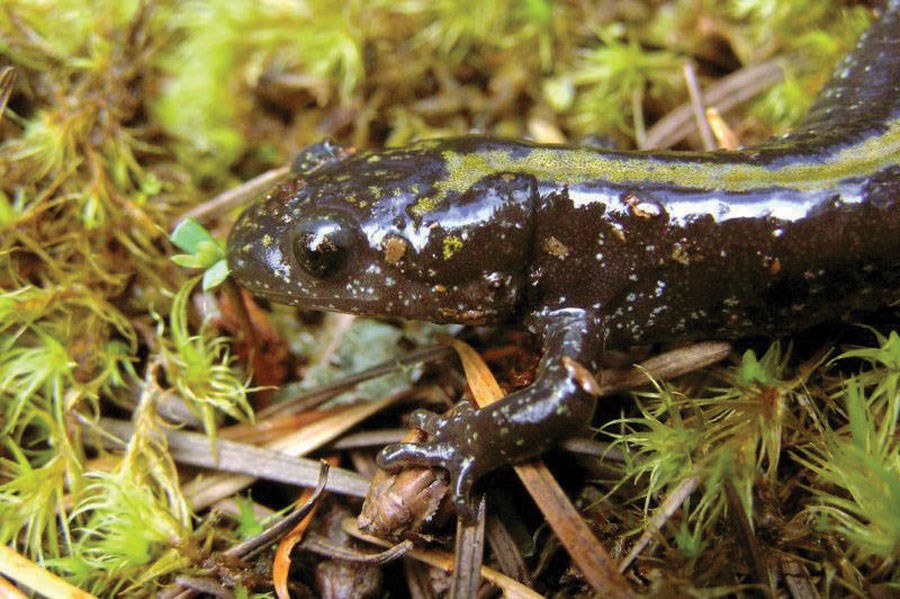
The first big snowstorm hit Jasper in mid-October this year. Large, sticky flakes quickly accumulated on yet-to-be-stored deck furniture and still-alive blooms streaming from hanging baskets.
Winter came in without knocking, and caught us off guard. However, it seems we’re not the only ones. The night of the storm, Jasper local Stephanie Meyer went for a walk on the gravel road that leads toward the town reservoir, and ran into a gang of six super-cooled, long-toed salamanders trying to make their way across.
“Most of them were moving slowly or just sitting there,” said Meyer. Later she posted photos of the salamanders on Facebook and learned that other people living in the area had encountered them around the same time. One made its way into a garage in the Caribou Creek Co-ops, while others were spotted in the yards of trailer owners.
Back on the reservoir road, Meyer kept her headlamp pointed to the ground, so as not to accidently step on one. As the snow piled up, she wondered, what were they doing there?
Biologist Karen Graham studied long-toed salamanders in the Hinton area as a graduate student at the University of Guelph. She said there’s a couple of reasons salamanders may have been wandering around.
“They may have been out feeding, and gotten caught in the snow,” said Graham.
Though they are amphibians, salamanders spend a lot of time out of the water hunting for insects, earthworms and other creepy crawlies.
Graham said the salamanders may also have been migrating.
“Some studies suggest that in the fall, adults migrate back towards the forested area near their breeding ponds to find a place to hibernate,” she said.
It’s thought long-toed salamanders spend their winters in small animal burrows, natural crevices and root systems below the frost line.
If they were heading back toward their breeding pond, this behavior begs the question: Where is it? Though Cabin Creek is nearby, long-toed salamanders prefer not to breed in running water, opting instead for lakeshores, small ponds and even ditches with standing water.
“They don’t need much, but they prefer it to be calm.” said Graham.
The wandering salamanders may also have been juveniles, known in Alberta to disperse from their ponds and seek hibernation sites around the month of September. Graham said juveniles are generally shorter than eight centimeters from snout to tail-tip, while adults tend to be longer, up to 30 centimetres at full growth. Size is the easiest way to tell them apart, as juveniles and adults are both black, dark brown or greenish with yellow striping down the back.
Regardless of why they were moving around, the timing makes sense. Typically salamanders like to travel and hunt at night, when the earth is wet, said Graham. As amphibians, they prefer to keep their skin moist, and rain tends to bring them out. Sometimes Graham takes salamander enthusiasts out on rainy spring nights to observe them frolicking in small ponds in the Hinton area.
“You can see them swimming around, or in amplexus,” said Graham, referring to the tight embrace of mating salamanders.
As to Meyer’s sighting, it’s hard to say with absolute certainty what the salamanders were doing, but to see six at once seems a wonderful and unique opportunity. Still, Meyer wonders if the salamanders are around more than we think, and we just don’t see them. Perhaps, like Meyer, more of us should embrace the night as a time to experience the dark woods, and to catch a glimpse of the creatures that hide away during the day.
Niki Wilson
Special to the 51����
